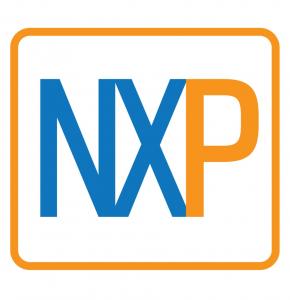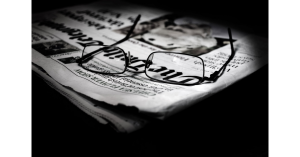
NewsXPartners (NXP) reviews how advertising Memorable Jingles, Slogans, Symbols, and Mascots have changed
Somehow the simple memorability in advertising seems to have given way to abstraction and frenetic multi-sensory stimulation.
Since 1936, Oscar Mayer’s “Wienermobile” has been used to promote and advertise its hotdogs. However, in May 2023, “Oscar Mayer announced that it was renaming the ‘Weinermobile' the ‘Frankmobile,’ to promote a new recipe for its all-beef franks. “The Wienermobile is a beloved American icon that has been sparking smiles and driving craveability for our iconic delicious wieners for nearly 100 years,” the company says. But will fans positively accept the change after all these years? Is it simply change for change's sake? A quick flash for consumer attention? [See full press release.]
People are exposed to thousands of advertising impressions daily, leading marketers to resort to engaging cognitive aspects from multiple parts of the brain to trigger the maximum association potential. In other words, commercials today try to break through the clutter with shock, surprise, and emotional appeals. But at what expense? Are traditional advertising values being lost?
The concept of the USP—unique selling proposition—was introduced in the 1961 book, “Reality in Advertising,” by Rosser Reeves, then head of the Ted Bates advertising agency. Among his advertising ideas, Reeves is credited with the slogan for M&Ms, “Melts in your mouth; not in your hands,” and is said to have inspired the character Jon Hamm in “Mad Men.” However, the term USP is often cited but not frequently followed, as today’s campaigns evidence, whereas jingles, slogans, symbols, and mascots have proven their USP potential.
Jingles have a record of success for a diversity of brands and work best when they’re simple, memorable, and differentiating:
"Nationwide is on your side."
“Like a good neighbor, State Farm is there.”
"Snap! Crackle! Pop!" for Kellogg’s Rice Krispies.
"Uh-oh! Spaghetti-O's!" from Campbell’s.
"Mm-mm, good. Mm-mm, good…Campbell’s.”
"Ace is the place with the helpful hardware man."
“Plop plop, fizz fizz, oh what a relief it is.” Alka Seltzer.
“You’ll wonder where the yellow went, when you brush your teeth with Pepsodent.”
But the trend for jingles is downward. A 1998 survey of television commercials by the American Association of Advertising Agencies counted 153 jingles in a sample of 1,279 national 30-second ads (12%); by 2011, only eight out of 308 ads had jingles (2.6%). The number of jingles used in advertising today is probably fewer than 2%.
Slogans are concise phrases that position and differentiate brands, and solidify recognition, by telegraphing the key benefits:
Nike: “Just Do It.”
L’Oréal: “Because You’re Worth It.”
Lay’s: “Betcha Can’t Eat Just One.”
Bounty: “The Quicker Picker Upper.”
The New York Times: “All The News That’s Fit to Print.”
Capital One: “What’s in Your Wallet?”
U.S. Army: “Be All That You Can Be.”
Symbols are designs that give personality to a brand and may imply—perhaps subconsciously—a product benefit:
The Nike “swoosh” symbol suggests speed and action.
FedEx’s arrow design within its logo subliminally means expediency.
Amazon also uses an arrow in its logo to connect ‘A’ to ‘Z.’
Shell Oil’s shell symbol is unmistakable.
The Baskin-Robbins logo contains ‘31’ for 31 flavors.
McDonald’s golden arches form the letter ‘M.’
Mascots can serve as ambassadors of a brand and make emotional connections:
Colonel Sanders, the founder, is the face of Kentucky Fried Chicken.
Tony the Tiger represents Kellogg’s Frosted Flakes.
Ronald McDonald symbolizes and personalizes the burger chain.
The Michelin Man embodies the company’s tires.
Easy-to-bake products are brought to life by the Pillsbury Dough Boy.
Geico's gecko makes the brand memorable.
Energizer Bunny exemplifies the key benefit: energy.
Returning to jingles, slogans, symbols, and mascots to communicate advertising ideas and personalize brands makes sense based on earlier successes. But are today’s advertising agencies and clients willing to commit the time and patience to create great advertising? Advertising to remember, not just a quick “like” or smiley face.
The recent fiasco involving Bud Light and Dylan Mulvaney in support of the transgender movement highlights why brands must be cautious when taking on trending social issues as a shortcut from solid, creative, and well-thought-out advertising. [See full release.]
About
NewsXPartners Corporation (NXP) is a publicity firm headquartered in the United States.
R. D. Hastings
NewsXPartners Corporation
+1 516-279-2076
email us here
Distribution channels: Business & Economy, Companies, Consumer Goods, Media, Advertising & PR, U.S. Politics
Legal Disclaimer:
EIN Presswire provides this news content "as is" without warranty of any kind. We do not accept any responsibility or liability for the accuracy, content, images, videos, licenses, completeness, legality, or reliability of the information contained in this article. If you have any complaints or copyright issues related to this article, kindly contact the author above.
Submit your press release

